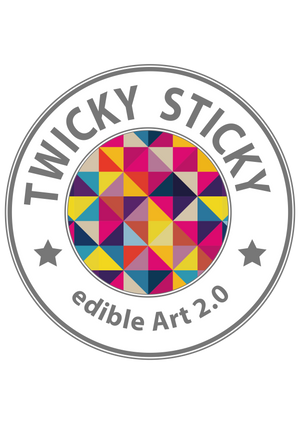The harmony of art and emotional experience :
The symbiosis between art and emotion is a fascinating, centuries-old journey that uniquely captures the boundaries of human creativity. Twicky Sticky transforms beverage preparation into an innovative art form where visual aesthetics not only delight the eye but also touch the heart.
The connection between art and emotions :
The inextricable connection between art and emotions is not merely a subjective feeling, but is also confirmed by numerous scientific studies. Psychological research shows that visual art, whether in the form of paintings, sculptures, or, in our case, artfully designed beverages, has a profound impact on emotional experience.
Influence of visual art on emotions :
1. Study by Zajonc and Markus (1982) : The groundbreaking work of Zajonc and Markus (1982) provided insights into the rapid and automatic emotional response to visual stimuli, particularly artistic representations. The research revealed that visual perception can trigger emotional reactions immediately and without conscious processing. These findings underscore the powerful emotional resonance that art can evoke in a matter of seconds.
2. Study by Leder, Belke, Oeberst, and Augustin (2004) : Leder et al.'s (2004) investigation of the neurophysiological basis of emotional processing of works of art deepened our understanding of how viewing art triggers specific activations in emotionally relevant brain areas. The research demonstrates that the effects of art are evident not only on a subjective level but also on a neurobiological level. This helps explain the deep connection between visual art and emotional resonance.
3. Study by Niedenthal, Halberstadt, and Setterlund (1997) : Within the context of the relationship between art and emotional expressiveness, the research by Niedenthal et al. (1997) shed light on how art not only reflects emotions but also contributes to their expression. This study emphasizes the unique role of art as a means of emotional communication by highlighting the connection between the creator, the artwork, and the viewer.
The role of art in the emotional experience of Twicky Sticky :
In the context of Twicky Sticky, the combination of these research findings highlights the importance of the visual design of each beverage, transforming each cup into a canvas that engages not only the taste but also the emotions. Hidden within each cup of Twicky Sticky is a narrative, an artistic expression that evokes emotions and enriches the moment. The artful design of each beverage becomes a visual poem that engages not only the palate but also the soul.
The essence of creativity :
Twicky Sticky is far more than just a drink; it's a canvas on which creativity finds expression in every stroke and every nuance. The artful preparation becomes an act of self-expression, allowing emotions and flavor to unite in a single work of art.
The Science of Emotions :
Emotions are a central element of the human experience. They influence our behavior, our decisions, and our perceptions. Research into emotions provides deep insights into the mechanisms that shape our daily experiences. At Twicky Sticky, we use these insights to develop products that are not only visually appealing but also emotionally engaging.
Basics of emotion research :
Emotions arise from complex interactions between neurological, cognitive, and physiological processes. Researchers such as Paul Ekman have shown that basic emotions such as joy, sadness, fear, and surprise are universal, while their expressions and triggers can vary across cultures.
Relevant studies and findings :
1. Study by Ekman (1992) : Ekman's work on the universal nature of facial expressions demonstrated that basic emotions are recognized similarly across cultures. This underscores the importance of universal emotional stimuli in the design of products like Twicky Sticky.
2. Lazarus' Theory of Cognitive Appraisal (1991) : This theory emphasizes that emotions arise from our evaluation of events and situations. Understanding these processes helps us develop designs that elicit positive emotional responses.
3. Barrett's concept of engineered emotions (2017) : According to Barrett, emotions are not hard-wired, but are constructed by our brains in response to sensory input and past experiences. This understanding allows us to create products that enable diverse emotional experiences.
Practical application :
By integrating these scientific findings into the development of our Twicky Sticky products, we create experiences that are deeply rooted in human emotion and enrich the daily lives of our customers.
The art of emotions at Twicky Sticky :
In the world of Twicky Sticky, each cup becomes a unique work of art that not only appeals to the palate but also touches the deepest emotions. Visual aesthetics become a language that expresses feelings and creates emotional resonance. Neuroscientific studies by Wagner et al. (2020) show that contemplating artistic elements can have positive effects on the activity of the brain's reward system. Thus, the visual aesthetics of Twicky Sticky can not only provide aesthetic pleasure but also enhance emotional well-being.



